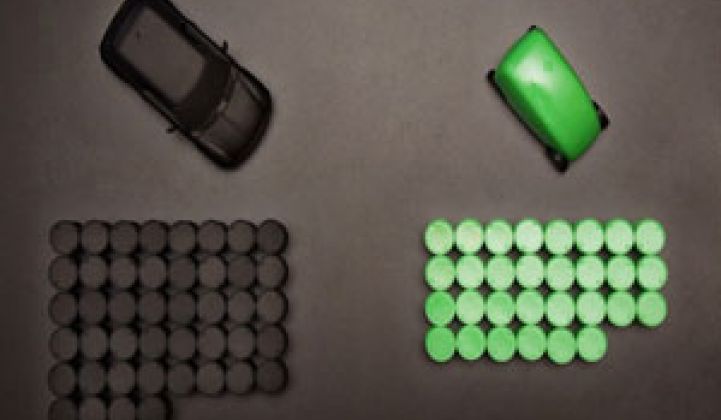Three of the cars will fit into a standard parking space, says Hugh Owen, managing director of Gordon Murray Design.
And you thought the Smart Car was small. Take that, Smart Car.
“It’s smaller than a Smart Car but better packaged,” Owen said. “We want people to focus on the fun of driving vehicles. It will be cool. It will be funky.”
The company is fine-tuning the manufacturing processes and car design now and hopes to build a prototype in early 2009.
GMD will not make production cars itself. Instead, it will license its designs and manufacturing process to other companies, which will then make the cars.
A big key to the car’s appeal and eco-friendliness revolves around the manufacturing processes. Dedicated factories for building the T.25 will be only about 20 percent the size of conventional car factories and consume far less energy, Owen said. Mini cars equal mini factories.
The car will also require far fewer components. Fewer components and smaller factories lead to fewer natural resources being consumed. But the car can be made in conventional factories too.
A normal car takes about $1 billion dollars and seven years to get into production, but getting a T.25 production line going will take “significantly less investment and significantly less time,” Owen said.
The first cars will likely run on gas or diesel – not the most eco-friendly fuels in the world. Owen, however, noted that both fuels are freely available: going with gas allows GMD to avoid the higher cost of creating a plug-in hybrid or all-electric car.
At 60 miles per gallon, the T.25 will get better mileage than typical hybrids, he said. The 2008 Toyota Prius, for example, gets 26 miles per gallon.
The car also can accommodate other types of drive trains, so electric cars are a future possibility. The diesel versions, of course, can also crank on biodiesel.
The manufacturing process and licensing model are the most radical elements of the venture, said Erik Straser, a partner at Mohr Davidow Ventures, which has put more than $10 million into the company.
By avoiding manufacturing, GMD won’t have to sink hundreds of millions into new factories and marketing. It will concentrate on fit, finish and design, while leaving logistics to those that already have an industrial footprint.
“The incumbents (in the car business) will probably not be the early adopters,” Straser said. Instead, early licensees will likely be makers of two- and three-wheeled cars or industrial vehicles, i.e. the companies that make forklifts, train cars, mini-buses or delivery trucks.
Of course, the model is dependent on getting companies to sign on to take the risk – and reap the bulk of the potential reward – and to execute well enough to make it a success.
In spite of the focus on cost, both Owen and Straser asserted that the car initially wouldn’t be targeted at consumers in developing countries. “We’re not trying to cost reduce a Yugo,” Straser said.
It would be a surprise if Murray were, with his hipster, luxury-design heritage. He designed the McLaren F1 supercar and the Mercedes SLR McLaren. His background is reminiscent of that of Hendrik Fisker, the car designer who is bringing out the Karma luxury serial hybrid at his new company, Fisker Automotive.
GMD expects the first cars to be sold to consumers in dense urban centers in Europe and Asia. City cars are already popular in places like Tokyo. Later, the car could roll out in North American cities like New York or Chicago. (Although designated as a city car, the T.25 can drive on the freeway. They just aren’t made with long-haul drivers in mind, as frequent roadtrippers likely will want larger vehicles.)
Owen said that the first cars would likely cost around £5,000 to £5,500, or $10,000 to $11,000.



